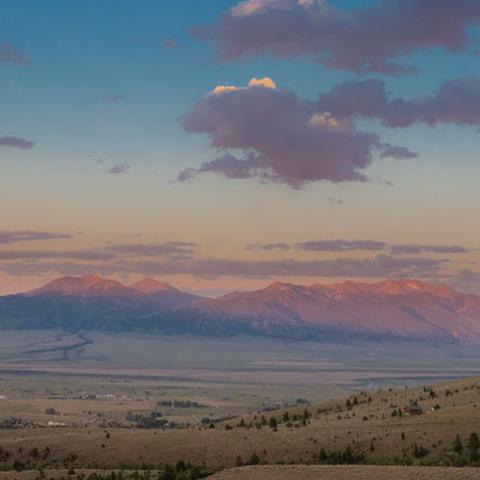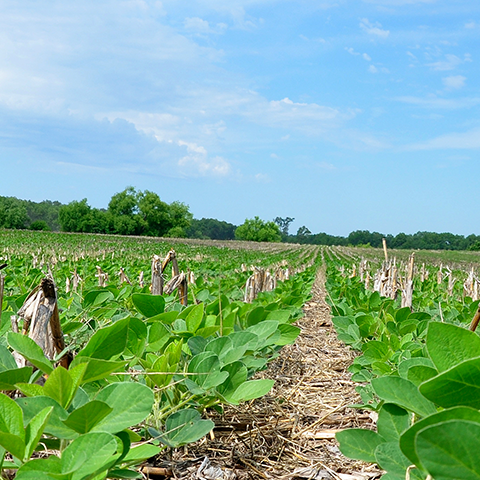Conservation Easements in Northern Utah Preserve Sensitive Lands for Future Generations
Funding from the Natural Resources Conservation Service has helped protect 2,100 acres since November 2023.
Within the last five months, years of work to conserve agricultural land in Northern Utah has culminated in the permanent protection of more than 2,100 acres. Several conservation easements sponsored by Summit Land Conservancy, Ogden Valley Trust, Summit County, Bear River Land Conservancy, and the Utah Department of Agriculture and Food will work to preserve wildlife habitat, cultural history, and limit nonagricultural uses that could negatively affect the conservation value of the land.
Financial assistance from the Natural Resources Conservation Service (NRCS) contributed $3,614,500 from the Agricultural Conservation Easement Program – Agricultural Land Easement (ACEP-ALE) and $2,045,000 from the Regional Conservation Partnership Program (RCPP). “The successful protection of these sensitive lands is due to the dedication of local and state municipalities, land trusts, and conservation partners working with private landowners,” said Travis Mote, NRCS Acting State Conservationist for Utah, “NRCS is grateful to be a partner in providing assistance to ensure Utah’s natural resources are protected for future generations.”
ACEP-ALE’s conservation easements protect the agricultural viability and related conservation values of eligible land by limiting non-agricultural uses. Easement programs through NRCS are voluntary and provide technical and financial assistance to help private and tribal landowners, land trusts, state and local municipalities and other eligible entities protect working agricultural lands.
Land eligible for agricultural easements includes private or Tribal land that is agricultural land, cropland, rangeland, grassland, pastureland, and nonindustrial private forest land. In Utah, 25 easements have successfully closed in the last ten years, totaling 27,481 acres.
Connecting Conservation in the Upper Weber Watershed

The Utah Headwaters Initiative was started in 2019 by Summit Land Conservancy with a goal of targeting the Weber, Provo and Bear River Watersheds for land preservation through conservation easements. All three of these important rivers contribute to and feed into the Great Salt Lake. Preserving adjacent agricultural lands, improving wildlife habitat, and working with landowners to implement climate-smart land management practices is critical to the continued conservation Utah’s natural resources.
Designated as containing soils of statewide importance by NRCS Utah State Conservationist Emily Fife, the 110-acre Sargent Ranch property received an RCPP award of $2,045,000 to preserve the pastureland, cropland and riparian wetland surrounding a quarter mile of the Weber River. Visible from Interstate-80 and the city of Coalville, the easement will also protect aquatic habitat and nesting areas for migratory birds.

The successful closure of the 96-acres Andrus Farm conservation easement in unincorporated Marion will protect the Kamas Valley Meadows and preserve agricultural land that has been in use by the Andrus family for more than 100 years. "The land is beloved by all of my brothers and sisters and cousins, as my grandfather bought it in 1914. My daughter Michelle is now the fourth generation that has loved and worked the land,” said landowner, Irene Ruf in an earlier news release from Summit Land Conservancy. “It's just precious. It's home."
By putting the property under easement, the land will continue to provide food production, contribute water to an important aquifer feeding into the Weber River and Great Salt Lake, and support a friendly ecological habitat for various meadow species. A combined $250,000 from a General Obligation Bond and $250,000 from Eastern Summit County Agricultural Preservation (EAP) funds also contributed to the agreement.

Located within a state-designated Sage Grouse Management Area in eastern Summit County, the closure of the 852-acre Richins Chalk Creek property easement represents the culmination of decades of dedication to the land by the Richins family. Since 1991, the Richins have worked to preserve natural resources, partnering with NRCS on several efforts including riverbank restoration, fencing to create specific access points for livestock, and planting willows to improve filtration and water flow. They've also worked with Trout Unlimited to improve Bonneville cutthroat trout habitat.
The family has been recognized multiple times with the 1996 Steven Gillmor Award for stream restoration, the 2001 Summit County Conservation District’s Rancher of the Year, the Department of Water Quality’s Calvin Sudweek Award for contributions to water quality in 2002, and the Sandy County Foundation’s Leopold Conservation Award in 2016. The easement will ensure the continuation of these preservation efforts for generations to come.
A Crucial Wildlife Habitat with Cultural Significance

The 1,054-acre conservation easement on a working cattle ranch in Cache County represents immense ecological, agricultural, and cultural value. It is a crucial habitat area for mule deer and elk, providing vegetation for wildlife in winter and summer habitat for moose. Directly adjacent to the Little Bear River Wildlife Management Area, the land also provides connected habitats for upland and migratory birds, including sharp-tailed grouse.
Once home to the Northwestern Band of the Shoshone Nation, the Cache Valley and in particular an area recognized as “Sagwich Basin” continues to hold historic significance to tribal members. In a letter by Darren Parry, former Chairman of the Northwestern Band of the Shoshone Nation, he referred to the area as more than just land. “It was a home, a burial ground, a refuge from war, a fall encampment, and a lookout to a point where four different canyons came together,” Parry wrote.
The Bear River Land Conservancy became involved with conservation plans for the land in 2017, securing assistance from Utah’s LeRay McAllister Critical Lands Conservation Fund and the NRCS ACEP in 2019 and 2020. The nonprofit land trust co-holds the easement with the Utah Department of Agriculture and Food.
More about ACEP and the Inflation Reduction Act
A total of $19.5 billion in additional funding from the Inflation Reduction Act, including $1.4 billion for ACEP, is currently available over several years for climate-smart agriculture and forestry mitigation activities through NRCS conservation programs.
On March 13, 2024, NRCS announced it will invest about $138 million of financial assistance from the Inflation Reduction Act in 138 new climate-smart conservation easements, through which farmers and ranchers are conserving wetlands, grasslands and prime farmlands. Applications for FY25 are being accepted until November 01, 2024. Learn more about ACEP programs in Utah or contact NRCS Utah Easement Coordinator Scott Morton at scott.morton@usda.gov.
More about RCPP
RCPP promotes coordination of NRCS conservation activities with partners to address on-farm, watershed, and regional natural resource concerns. Historic funding is made possible by both the Inflation Reduction Act, part of President Biden’s Investing in America agenda, and the Farm Bill.
In the last four years Utah NRCS received several funded RCPP Easements projects. An additional $1.5 billion has been made available for FY24. RCPP project proposals are being accepted through July 2, 2024. See the Notice of Funding Opportunities for RCPP Classic and RCPP Alternative Funding Arrangements on Grants.gov for eligibility requirements. For more information on the RCPP application process visit our How to Apply page or contact NRCS Utah RCPP Program Manager Sara Saunders at sara.saunders@usda.gov.
#
USDA is an equal opportunity provider, employer and lender.




